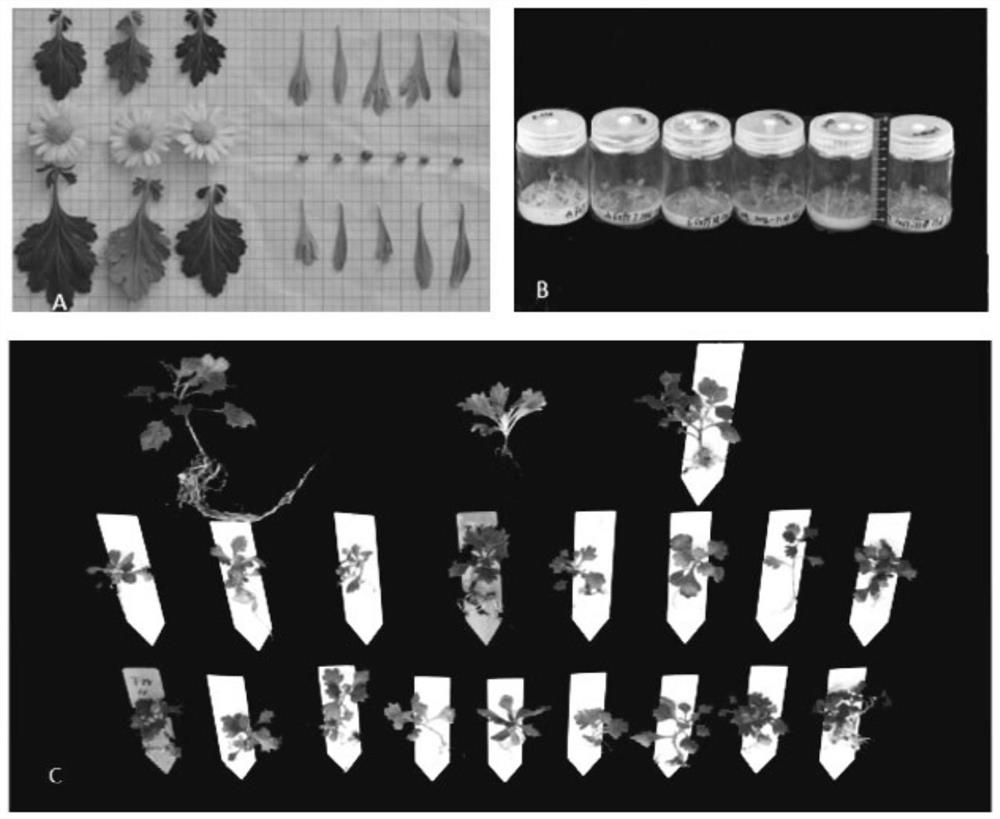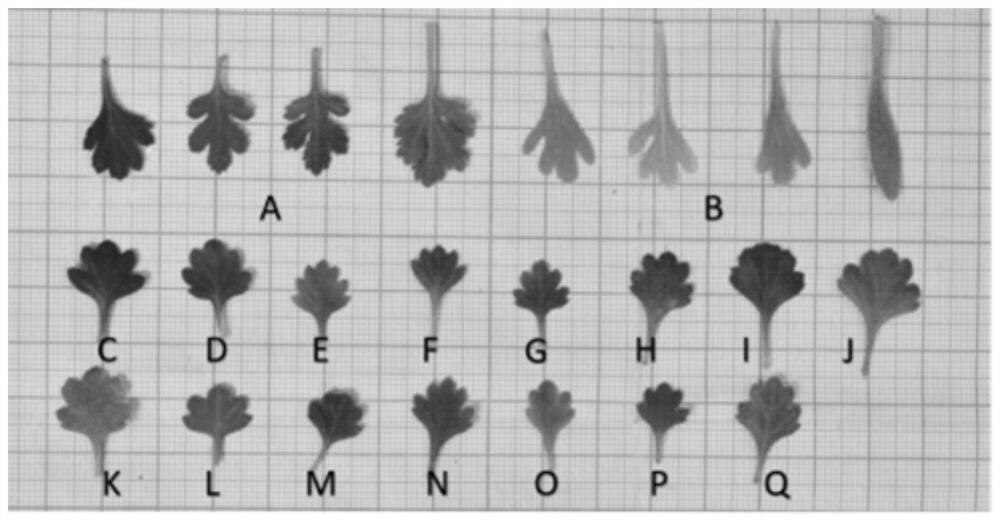Intergeneric distant hybrid creation method of crossostephium chinense and creeping ground-cover chrysanthemum
A technology of distant hybrid and hibiscus chrysanthemum, which is applied in horticultural methods, botanical equipment and methods, plant genetic improvement and other directions, can solve the problems of small immature embryos, few applications, and difficulty in peeling off, and achieves the effect of avoiding premature senescence of embryos.
- Summary
- Abstract
- Description
- Claims
- Application Information
AI Technical Summary
Problems solved by technology
Method used
Image
Examples
Embodiment 1
[0064] Example 1 Embryo rescue using young embryos of different embryonic ages to obtain intergeneric hybrid offspring of hibiscus and creeper chrysanthemum
[0065] Embryo rescue using young embryos of different embryonic ages to obtain intergeneric hybrid offspring of hibiscus chrysanthemum and creeper chrysanthemum comprises the following steps:
[0066] 1. Preparation of parents: the female parent selects the diploid salt-tolerant wild species Cr.chinense of the genus Chrysanthemum (Cr. Adjust the flowering period of Hibiscus chrysanthemum, put it in the artificial climate chamber for 8 hours of short-day maintenance in August, and reach the full flowering period in mid-October; the short-day artificial climate chamber is set at 70% humidity, 25°C during the day and 22°C at night , the light time is from 6 o'clock to 14 o'clock, and the light intensity is 1600-2000lx.
[0067] 2. Distant hybridization: In the Xiaotangshan Nursery of the National Flower Engineering Center,...
Embodiment 2
[0074] Example 2 Using media with different hormone ratios for embryo rescue to obtain intergeneric hybrid offspring of hibiscus and creeper chrysanthemum
[0075] Embryo rescue using medium with different hormone ratios to obtain intergenus hybrid offspring of hibiscus and creeper chrysanthemum, including the following steps:
[0076] 1. Preparation of parents: the female parent is selected from the diploid salt-tolerant wild species of Furong Chrysanthemum (Cr. Adjust the flowering period of Hibiscus chrysanthemum, put it in the artificial climate chamber for 8 hours of short-day maintenance in August, and reach the full flowering period in mid-October; the short-day artificial climate chamber is set at 70% humidity, 25°C during the day and 22°C at night , the light time is 6:00-14:00, and the light intensity is 1600-2000lx.
[0077] For the comparison between the female parent Hibiscus chrysanthemum and the male parent Creeperia chrysanthemum, see figure 1 .
[0078] 2. ...
Embodiment 3
[0086] Example 3 Using Morphological Observation, Chromosome Counting and Flow Cytometry to Identify the Authenticity of Intergenus Hybrids of Hibiscus and Creeperia
[0087] Using morphological observation, chromosome counting and flow cytometry analysis to identify the authenticity of intergeneric hybrids of hibiscus and creeper, including the following steps:
[0088] 1. Identification of Hybrid Authenticity Using Morphology
[0089] 1) The parents and hybrid offspring were planted in the open field in May for routine maintenance and management. In autumn, observe and count the morphology of the parents and offspring materials, including: measuring plant height, crown width, and leaf traits.
[0090] 2) Each plant randomly selects three fully expanded leaves, measures the leaf length and leaf width, and measures the length of the petiole respectively; wherein the plant height, crown width, leaf length, leaf width, and petiole length are between the parents. identified as ...
PUM
 Login to View More
Login to View More Abstract
Description
Claims
Application Information
 Login to View More
Login to View More - R&D
- Intellectual Property
- Life Sciences
- Materials
- Tech Scout
- Unparalleled Data Quality
- Higher Quality Content
- 60% Fewer Hallucinations
Browse by: Latest US Patents, China's latest patents, Technical Efficacy Thesaurus, Application Domain, Technology Topic, Popular Technical Reports.
© 2025 PatSnap. All rights reserved.Legal|Privacy policy|Modern Slavery Act Transparency Statement|Sitemap|About US| Contact US: help@patsnap.com



